An alternative to @arunjos007' method is to (a) create a bundle of your images, then (b) retrieve from the bundle.
Let's say you have a Framework called Kernel, and you wish to access two types of files - cikernel and png.
Creating a bundle:
Move all your files/images into a new folder on your desktop. Name it whatever you wish. In my example I named them cikernels and images.
Rename your folders, with a .bundle extension. In my example they became cikernels.bundle and images.bundle. You will see the warning below... choose "Add".

- Drag the bundle into your framework project. You can expand the bundle to see the contents. Also, you can add/delete/edit the contents of the bundle.
Retrieving files from the bundle:
I've created two public functions, one to retrieve files and one to retrieve images. They are pretty much the same, except for (a) the return type and (b) error handling. (I probably should add some to the UIImage function - but since I have total control on the code - it's not going to be used by anyone else - it's not critical.)
public func returnImage(_ named:String) -> UIImage {
let myBundle = Bundle.init(identifier: "com.companyName.frameworkName")
let imagePath = (myBundle?.path(forResource: "images", ofType: "bundle"))! + "/" + named
let theImage = UIImage(contentsOfFile: imagePath)
return theImage!
}
public func returnKernel(_ named:String) -> String {
let myBundle = Bundle.init(identifier: "com.companyName.frameworkName")
let kernelPath = (myBundle?.path(forResource: "cikernels", ofType: "bundle"))! + "/" + named + ".cikernel"
do {
return try String(contentsOfFile: kernelPath)
}
catch let error as NSError {
return error.description
}
}
One last note: The identifier is defined in the Framework target's General tab. Typically it's in the form com.companyframework*. Change that line to your's.

